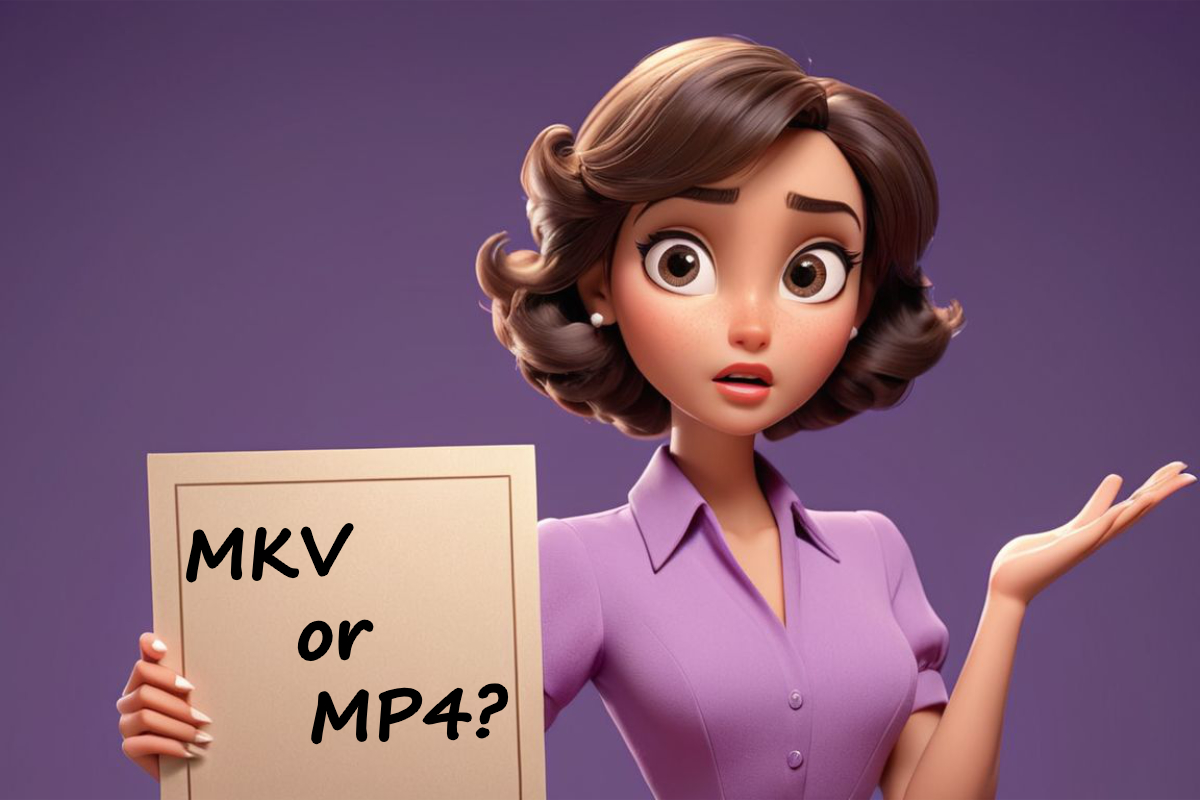
It can be frustrating to download a video only available in a format that is not supported by the device you want to use. Or to guess which video format is the best option for you.
MKV and MP4 are two of the most popular video file formats. What is the difference between MKV and MP4? Is MKV better than MP4? To ease your dilemma, we have explained and compared these two most used video file types. Here's what you need to know.
First things first: Defining containers and codecs
Multimedia files consist of two parts: a container and a codec. Once you understand this difference between them, you will see why some video files are different or better than others. A video file with a default extension is actually a type of container.
The container determines which types of data can be kept in the file and how that data is arranged within the file. It contains a video codec, an audio codec, and subtitles. Having all three important components of video in the same file makes transfer and playback much simpler. Container types do not necessarily specify how the data is encoded.
When dealing with raw videos, who require a lot of space there is a necessity for videos to be compressed to a reasonable file size. Compression methods are different and each has its advantages and disadvantages.
Video codecs represent different compression methods. Note that container files can support multiple codecs. Then problems may occur. If your device can read the MP4 video format, it may not be able to decode the video within that MP4 file (which may be encoded as Xvid, x264, or x265).
It is also possible to combine different codecs. For example, if it suits you, opt for a high-quality video codec but go for medium-quality audio.
Commonly used video containers
Many types of video containers have been introduced. However, only a few are used daily. When you download a video from the web, that file will almost certainly be one of the following two container formats:
MP4 (MPEG-4 Part 14)
What does MP4 stand for? MPEG-4 Part 14 is a standard specified as a part of MPEG-4.
MP4, a digital multimedia container format, was first introduced in 2001. The MP4 format then took over the popular QuickTime file format and improved it in several ways. It is most commonly used to store video and audio, subtitles, and still images. It supports a wide variety of video and audio codecs but is most commonly used with H.263 / H.264 for video and AAC for audio. Like most modern container formats, it allows streaming over the Internet.
MKV (Matrosia video file)
So, what is the MKV file?
MKV format was first introduced in 2002. It has certain features that set it apart from the previous file formats. MKV files can contain almost all types of video and audio codecs. It can hold an unlimited number of video, audio, picture, or subtitle tracks in one file, making it the most flexible format currently available.
It is a free and open standard, which has helped it stay relevant for years. Matroska file extensions are .mkv for video.
MKV vs. MP4
When it comes to platform compatibility, MP4 has better compatibility than MKV in video editing software and playback devices. It is widely used to play videos in a web browser and has fewer overhead files. MP4 is also a suitable format for uploading videos to YouTube. The videos optimized for mobile devices choose MP4 for encapsulation. MP4 video is played on different kinds of portable players without limitation. If you have downloaded some special third-party media players on a mobile device, you may also be able to play MKV files.
On the matters of quality, keep in mind that the quality can be influenced by many factors (e.g. frame rate, resolution, frame rate, sample rate, etc.). MKV usually has a larger file size than MP4 videos. However, this does not mean that the quality of the MP4 file is not as good as MKV. Since MKV and MP4 are both container formats, they can encapsulate the same video and audio.
The most important factor for video quality in MP4 compared to MKV is the codec. As previously mentioned, MKV supports multiple codecs, making more options available. Always make sure that the selected codec is reliable and available for the software you are using.
Which video format is the best for your video?
The truth is, there is no fixed answer. Both video formats have their advantages for special cases, while not being so good for the others.
All in all, try to choose a suitable video format container according to your actual requirements. When creating a video, weigh in the pros and cons. Take into consideration how many people can play a particular type of container file and a certain codec?
Finally, after everything you have found out about the two formats, make your own choice and decide – which is better MKV or MP4?
Can I convert MKV to MP4?
Of course, you can. If you use the online video converter, not only you can convert MKV to MP4, but you can also change other settings – the screen size, video bitrate, audio quality, audio codec, video frame rate, and more.

